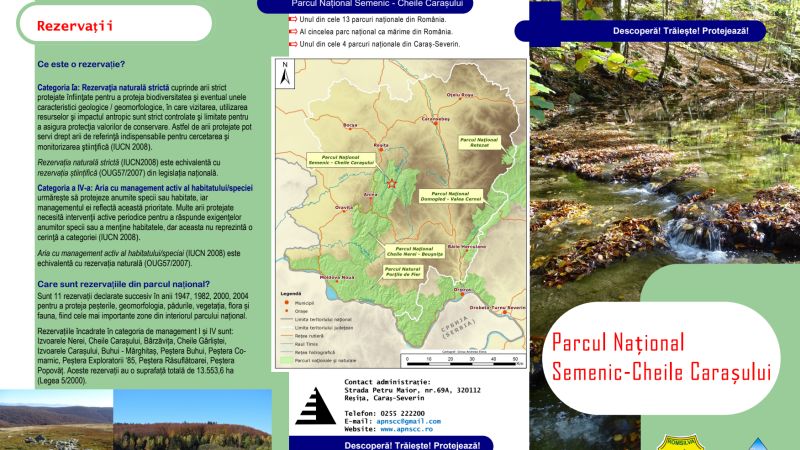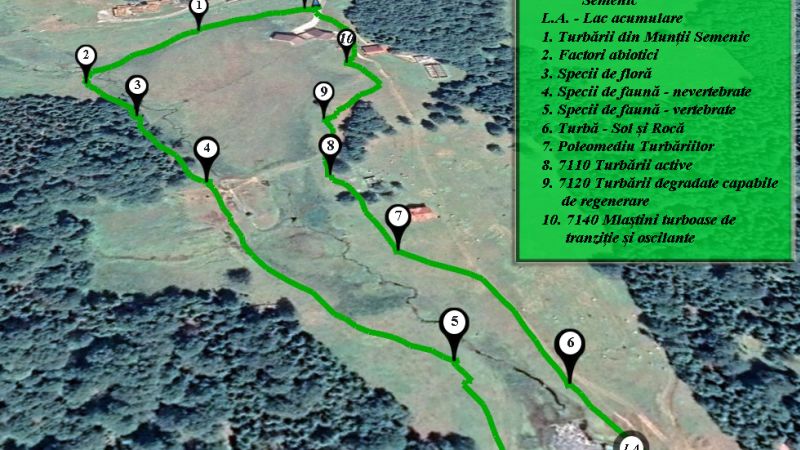Caraşului Keys

The Cheile Carașului Nature Reserve can be visited on two tourist routes:
The Caraşova – Comarnic route, marked with a blue triangle, is 9.2 km long and crosses the Caraşului Gorge between the town of Caraşova and Poiana Prolaz over a distance
of 5 km after which it crosses the limestone plateau to Comarnic and the cave of the same name. The connection with other routes is in the Comarnic area with the marked route (blue lane) towards the town of Reşita or the town of Anina; with the red cross route to
Villa Klaus and Semenic Resort. The main route and the European route (E3) Reşiţa – Gura Golumbului, marked with blue tape, is 35.5 km long and crosses the Cheile Caraşului / Cheile Buhuiului between Comarnic and Anina (Orasul Nou district) for a distance of 13.5 km. The connection with other routes is in the Comarnic area with the marked route (blue triangle) towards the town of Caraşova; with the red cross route to Vila Klaus and Semenic resort.
Length: 19km, maximum depth 200m. The Caraş gorges are formed by the Caraş river that eroded the Jurassic and Cretaceous limestones. The slopes are predominately with cliffs, slabs, vertical walls and pits at the base. The river meanders, forming brooks and calcareous ridges that descend from the edge of the gorges to the water. On the plateaus bordering the gorges, there are numerous fields of boulders, sinkholes and ravines, and on the slopes of the gorges there are more than 400 caves and karst springs. The slopes are partially covered with chasmophytic vegetation of bushes (Cornus mas, Carpinus orientalis, Syringa vulgaris, Ruscus aculeatus) or trees of the species beech, gorun, cer, on the gentler slopes. Hygrophilous vegetation grows along the water with associations of Petasites hibridus and on the banks Salix eleagnos trees.
In the gorges and tributaries there are numerous species, characteristic being the reptile species Vipera ammodytes, the amphibian species Bombina variegata, the fish species Barbus meridionalis, the invertebrate species Austropotamobius torrentium, the mammal species Myotis myotis, Lynx lynx, Canis lupus and bird species Aquila pomarina, Bubo bubo. In order to protect the landforms, the habitats and the identified species, the Cheile Caraşului Natural Reserve was designated.



